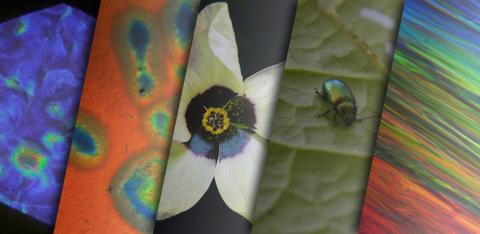'Colour Engineering: from nature to applications'
Silvia Vignolini (Department of Chemistry, University of Cambridge)
The most brilliant colours in nature are obtained by structuring transparent materials on the scale of the wavelength of visible light. By controlling/designing the dimensions of such nanostructures, it is possible to achieve extremely intense colourations over the entire visible spectrum without using pigments or colorants. Colour obtained through structure, namely structural colour, is widespread in the animal and plant kingdom [1]. Such natural photonic nanostructures are generally synthesised in ambient conditions using a limited range of biopolymers. Given these limitations, an amazing range of optical structures exists: from very ordered photonic structures [2], to partially disordered [3], to completely
random ones [4].
In this seminar, Silvia will introduce some striking example of natural photonic structures [2-4] and review our recent advances to fabricate bio-mimetic photonic structures using the same material as nature. Biomimetic with cellulose-based architectures enables us to fabricate novel photonic structures using low cost materials in ambient conditions [6-7]. Importantly, it also allows us to understand the biological processes at work during the growth of these structures in plants.

[1] Kinoshita, S. et al. (2008). Physics of structural colors. Rep. Prog. Phys. 71(7), 076401.
[2] Vignolini, S. et al. (2012). Pointillist structural color in Pollia fruit. PNAS 109, 15712-15716.
[3] Moyroud, E. et al. (2017). Disorder in convergent floral nanostructures enhances signalling to bees. Nature 550, 469.
[4] Burresi M. et al. (2014) Bright-White Beetle Scales Optimise Multiple Scattering of Light. Sci. Rep. 4, 727.
[5] Parker R. et al. (2018) The Self-Assembly of Cellulose Nanocrystals: Hierarchical Design of Visual Appearance. Adv Mat 30, 1704477.
[6] Parker R. et al. (2016). Hierarchical Self-Assembly of Cellulose Nanocrystals in a Confined Geometry. ACS Nano, 10 (9), 8443–8449.
[7] Liang H-L. et al. (2018). Roll-to-roll fabricationof touch-responsive cellulose photonic laminates, Nat Com 9, 4632.
